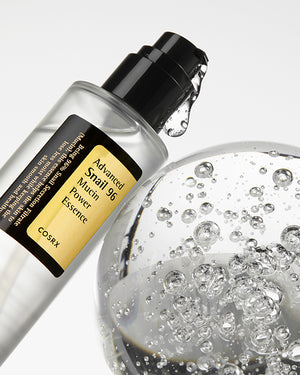Scalp Science: Should the Scalp be Cared for like the Skin?
The scalp is the tissue that covers the cranium and is the area where hair grows. As it is the area that extends from the face and neck, it is similar to the body skin. However, the scalp has its own unique characteristics, which make it an area that requires more meticulous care. Today, we will explore the basics of scalp science, including the characteristics of the scalp and the differences between the scalp and normal skin.
|What is the scalp?

The scalp is anatomically composed of five layers. By combining the first letters of the name of each layer, we can confirm that they form the word "SCLAP". Among these, the outermost skin layer, which we recognize as the scalp, is made up of the epidermis, dermis, and subcutaneous tissue, just like the body skin. Therefore, the skin layers of the scalp are structurally almost identical to the skin on the body skin.
However, the scalp contains more nerve tissues and blood vessels than the skin, and because it is the area where hair grows, it is covered by thicker terminal hair, unlike the body skin.
|How are skin and scalp different?
① High Hair Follicle Density
The hair follicle can be simply described as the “A pocket that produces hair." It is found throughout the body skin, but the density of hair follicles is the highest on the scalp. There are approximately 100,000 to 150,000 hair follicles in a surface area of 650-700 ㎠. Since thicker hair grows, the hair follicles on the scalp are located deeper than on the skin.

The cells in the hair follicle receive nutrients and produce hair through a process called keratinization. Looking more closely, these cells are mainly composed of dermal papilla cells, matrix cells, and melanocytes. The process is similar to how keratinocytes form keratin in the skin, but the type of cells that make keratin and the shape of the keratin formed are different.
The scalp is therefore an area with a high density of hair follicles, where various types of cells work together to actively produce hair, making the role of the hair follicle particularly prominent.
② Active Sebum Production

The sebaceous glands are connected to the hair follicles, where lipids such as triglycerides, wax esters, cholesterol, and squalene are produced. These lipids are secreted out of the pores through the sebaceous ducts and form a lipid layer on the surface of the skin. As with the skin, the lipid layer formed on the hair and scalp helps to retain moisture and provide protection.
However, the scalp has one of the highest densities of sebaceous glands in the body. Due to its high sebum production, extreme changes in the amount of sebum secreted or the lipid composition of the scalp can easily lead to scalp disorders. Therefore, it is important to maintain a proper balance of oil and moisture on the scalp.
③ Quick Turnover

Our skin goes through a process where new cells are formed, and old keratinocytes are shed. This process is called turnover. The scalp also undergoes turnover, but it has a faster turnover cycle compared to other areas of the body. Research has shown that skin turnover typically takes an average of 28 days, while the scalp's turnover cycle takes about 17 days. In addition, the keratinocyte layer on the scalp is thicker than on the skin, consisting of multiple layers, and the keratinocytes are larger in size.
④ Microbiome

Did you know that there is a specific microbiome that lives mainly on the scalp? Different types of microbes live in various parts of our body, and the skin also has its own microbial ecosystem, known as the 'skin microbiome.'
Malassezia, Propionibacterium, and Staphylococcus are the main microbes that make up the 'scalp microbiome.' Among these, Malassezia is a microbe that interacts closely with the scalp. In a healthy scalp, these microbes coexist in balance and help to protect the scalp. However, if the scalp environment is disrupted, the proportion of Malassezia can increase, leading to scalp disease. Therefore, maintaining the balance of scalp microbes is also important for a healthy scalp.
|Understanding the Unique Characteristics of the Scalp
The scalp is structurally similar to the skin, but it has its own unique characteristics, including the following:
- Dense nerve tissues and blood vessels
- High density of hair follicles and covered with thicker hairs
- Active sebum production
- Relatively faster cell turnover cycle
- Unique microbial composition
These unique characteristics of the scalp significantly impact on scalp health. While the points to manage are similar to those of the skin, the scalp requires special care because of these unique features. A well-maintained scalp is the foundation for healthy hair growth, so it's important to pay attention to the unique characteristics of the scalp for healthy hair.
Reference
British Journal of Dermatology, 106(6), 669-675 (1982)
Physiological Reviews, 34(1), 113-126 (1954)
Journal of clinical and investigative dermatology, 3(2) (2015)
Frontiers in cellular and infection microbiology, 8, 346 (2018)
Journal of Cosmetic Dermatology, 18(3), 922-928 (2019)










